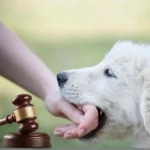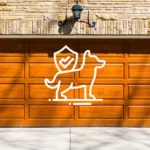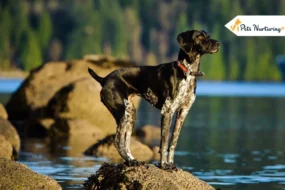
The webbed foot is a specialized limb in which the toes are linked to each other with the help of connective tissue. They are believed to have aroused from a mutation in the developmental gene that leads to shrinkage of tissue present between the digits. Due to the mutation in the gene, the shrinkage fails, leading to animals having webbed toes. Let’s see webbed feet dogs. This mutation proves beneficial to the semi-aquatic species of animals and birds as it gives them the upper hand in swimming by enhancing propulsion. Webbed foot is commonly seen in a variety of vertebrates and it aids them in locomotion.
The webbed foot is also referred to as a paddle. Webbing can differ across different species as some might have it in the form of skin while others may have it in the form of a membrane or a different connective tissue.You must’ve come across webbed feet in amphibians like frogs and toads, reptiles like geckos or turtles, birds like swans, ducks, and geese but many of you must be unaware of the fact that mammals may also have webbed feet to some extent. Common examples of mammals with webbed feet are the platypus, otters, and water opossums.
Webbed feet may not be widely seen in the entire canine species but dogs that swam or were specifically bred for working in muddy areas or watery areas retained this character as it aided in better locomotion. Other than providing a propulsive effect while swimming, the webbed feed also provides dogs with better grip in muddy and soggy areas preventing them from slipping or sinking in the mud.
Do All Dogs Have Webbed Feet? Umm …. Yes and No
Webbed feet aren’t seen in all canines but some amount of webbing is noticed in all of them just like the skin present between our fingers. The webbing is more prominent and developed in the canine swimmers and herders.
Webbing between a dog’s toes increases the surface area of the foot, helping them provide more force while swimming rather than just tearing through water. It also provides better grip when they are walking on rough terrains allowing them to get through obstacles with more ease. Webbed-toed dogs have more surface area of the foot, making them efficient diggers as they use their foot like a shovel.
Are You Imagining a Dog with Duck Feet?
I know that picture pops up almost instantly when you read dog breeds with webbed feet but there’s a difference. When you separate your dog’s toes you see a skin connecting the two digits, like the soft pink skin that connects the toes of my golden retriever, cookie. Whereas in ducks, well it’s pretty prominent, thicker, wider, and out there, you don’t need to separate their claws to see them.
Types of Dog Paws : Webbed Vs Non-Webbed
- Webbed Feet: You know all about it now as we already mentioned above.
- Hare Feet: The hare feet, unlike the name suggests, are still a dog’s paw which is longer and shaped like a hare’s feet with 2 middle toes longer than the others. Such feet enable dogs to jump higher and run faster.
- Cat’s Feet: they are small and round paw’s resembling that of a cat. Many working dogs have such paws that provide them with better endurance and stability. Here you can also read about Pet Frog Names.
Let’s Have a Look at Dog Breeds with Webbed Feet
Newfoundland


They are one of the most popular webbed feet dog breeds that originally accompanied fishermen on their fishing trips in Canada. These dogs helped in setting up nets and also in retrieving fisher or any equipment that might have fallen offboard.
They are a double-coated breed of dogs and their webbed feet and thick water-resistant coat allowed them to stay in cold water for a long time. They are a large breed of dog with a big frame and high stamina which even enabled them to rescue humans from water. Their feet are partially webbed and hence they need proportionally sized paws.
They have a sweet, loving personality and amazing ability to swim. Also, they were used to haul heavy equipment and fishing nets on the slippery surface of the boat and it’s their webbed paws along with every other perfectly suitable trait that enabled them to do this job with more ease.
They have a unique swimming pattern where they swim in down and out motions instead of following the regular dog paddle technique. The down and out motion enables them to make more powerful strokes. They use their tails as rudders to direct themselves in the desired direction. They are easy to train as lifeguards.
Newfie’s are still used for search and rescue operations in water as cold as that of the Arctic. They are great companion dogs for people at home as they are extremely gentle around children. They need regular exercise and love the outdoors.
Dachshunds


They are another breed of webbed feet dogs that use their feet for a completely different purpose. The Dachshunds are also referred to as Weiner or sausage dogs and their small size enables them to enter tiny spaces. They were originally bred as hunting dogs although you’ll commonly see them now as pampered house pets.
Dachshunds use their webbed feet like shovels to move out the dirt quickly, making them efficient diggers. They were used to hunt and retrieve vermin like rodents and badgers on farms giving protection to the crops from destruction. They can burrow into and retrieve a badger faster than the badger could dig further and escape.
Also, they were used by hunters to enter the tiny spaces where an animal would be hiding, scaring out the prey into open space making it easier for the hunter to hunt them down. They cannot run very long distances but must be given ample exercise to keep them fit and their muscles strong. Their tiny legs cannot bear too much weight so make sure they don’t become obese.
They make amazing pets but it may get a bit harder to train them indoors as they were bred to stay focused in the outdoors while hunting. They respond well to positive reinforcement. Dachshunds don’t do well if your training method is strict and punishment-based as they are sensitive.
Labrador Retriever

Labradors are one of the most popular web-footed dog breeds in the world. They are known for their soft, affectionate nature and amazing swimming skills. Their webbed feet help them to paddle smoothly through the water and their short hair coat is easy to shake off and dry after a swim.
Labradors make a wonderful family pet. Their short hair requires minimal grooming. They are extremely food-driven which makes it easy to train them using treats. They are widely used as police and service dogs due to their intelligent and sociable personality.
An ample amount of exercise is a must to keep them healthy and active. They can become obese or may use their pent-up energy in negative forms like chewing on furniture and destructing household items if not exercised enough. You can take them to a nearby clean and safe water body for swimming as swimming is one of the best forms of exercise.
There’s nothing a Labrador could love more than a game of fetch in the water as it involves two of their favorite things: retrieving and swimming. Like most water dogs they have a double coat, thick rutter tails, and large webbed paws that make them excellent and one of the fastest swimmers.
They were bred originally in Newfoundland to aid fishermen. Fowl hunters used labradors to retrieve downed game birds from lakes, ponds, and rivers. They have a soft mouth that enables them to retrieve dead birds without destroying them.
Poodles

The name of this breed, poodle, is derived from a French word meaning splash or according to some claims from a German word puddle which also means the same. Although they are now pictured as a breed with fancy haircuts alongside classy and modern city folks, they were originally bred for hunting ducks.
Their wool-like soft, oily, and curly hair are water-resistant and hypoallergenic. Poodles barely shed but need regular grooming to keep their fur free from matting and in good condition. Their webbed paws make them amazing swimmers and also enable them to walk easily on wet and muddy areas.
They make amazing housepets but we must not forget they were originally bred to hunt and retrieve waterfowls so they have a lot of energy that needs expanding.
You can include swimming in their exercise routine. They are also very intelligent and can be trained for obedience and agility. With proper care and exercise, they are perfect for your home.
Golden Retrievers

Golden retrievers are widely known for their soft and loving personality making them one of the most preferred family dogs around the globe. They are extremely gentle and tolerant around seniors and children, but did you know they are one of the best swimmers too?
Golden retrievers originated in Scotland and are known to be closely related to labradors and water spaniels. They love treading in water and their webbed feet, long double coat, and rutter-like, strong, hairy tail enable them to be the best at it. Like labradors, goldens too were originally bred for retrieving geese, ducks, and game birds from the water.
They wouldn’t hesitate for a second before jumping into the water to save someone from drowning. They love people and the outdoors and don’t do well if left alone in the house for long hours. Also, they need regular grooming, exercise, mental stimulation, and human connection. Swimming should be included in their exercise as there’s nothing they’d love to do more.
Their sensitive, empathetic and intelligent nature makes them amazing therapy and service dogs.
Other dog breeds with webbed feet, similar characteristics, and a love for swimming and/or hunting are Nova Scotia duck tolling retriever, Chesapeake bay retriever, Irish water spaniel, Otterhound, Weimaraner, German pointer, American water spaniel, Portuguese water dog, and Redbone coonhound.
Concerns Related to Webbed Feet in Dogs
- Webbed feet are amazing in all terrains and water, they also prove to be great snow boots but the only downside to that is, it allows more snow to get stuck in your dog’s foot compared to a non-webbed feet dog.
So, every time you come back from an outing in the snow make sure you clean your dog’s paw nicely as the snow stuck in their paw can disturb their thermoregulation and your pooch may catch a cold, get chaffed paws or frostbites.
You can also make them wear snow boots every time you take them out in the snow.
- The skin between the digits of webbed feet dogs provides the ticks and fleas, a perfect hiding space. So make sure you regularly check for these parasites that can give your pooch some serious infections.
- Webbing occurs by fusion of dog toes by skin or soft tissues known as simple syndactyly or by bone known as complex syndactyly.
If the dog shows complex syndactyly they are more prone to arthritis.
- Cleft palate: It is a cause of chromosomal mutation like the occurrence of webbed feet. The genetic abnormality that leads to the webbing between toes (which are not supposed to be connected) is the same which may fail to unite the areas which must be together which includes the mouth palate. This failure of union leads to the formation of a cleft in their palate.
- Scoliosis: if the dog with webbed feet has a defective gait or gains excessive weight, it can make them prone to scoliosis.
The above concerns can be avoided with proper breeding and careful management. Dogs with webbed feet are unique and gifted with the ability to swim (even into our hearts) and complete various other tasks. The character which was a cause of mutation proved to have its benefits and was thus preserved by the breeders throughout the world.
To find out more:











